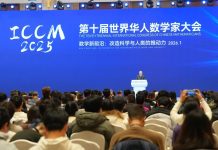BEIJING: For months, people have told inspiring stories about their battle against COVID-19 in newspapers and videos. Now, 65-year-old Zhao Wei has cracked a new medium: eggshells.
Medical workers in white protective clothing are saving patients; community workers remain at their posts on a snowy night; masked children remind others to wash their hands frequently… all these vivid scenes are portrayed on palm-sized and fragile empty eggs.
“Although I cannot go to the frontline and save lives, I can tell the heroic stories through drawing and inspire more people to defeat the coronavirus,” said Zhao, a Beijing-based folk artist.
Zhao has completed 65 eggshell painting works related to COVID-19 since January. She is willing to donate her creations to museums to let more people know these stories.
As a traditional Chinese folk art, painting on eggshells has a history of more than 2,000 years. When a baby is born, friends and relatives will send eggs dyed red as good luck gifts. The custom is still practiced in some parts of the country.
Zhao got most of her inspiration from news bulletins. From a variety of egg options, she chose duck eggs and chicken eggs this time, which can offer her more space to depict stories.
It requires ultimate precision and care before, during and even after the creation of the works. For a start, she drills a hole on the bottom of the egg to drain the contents inside, and leaves it to dry in the shade, as the sun will make it too brittle for painting.
“Drawing on a curved surface is quite different from doing so on a flat piece of paper,” Zhao said, noting that the pigments cannot be too dry nor too wet.
Her paintings feature vivid details. The wrinkles on doctors’ protective suits and naughty expressions in children’s eyes can be clearly seen on the painted eggshells.
Old art, new life learning from her father, Zhao has been practicing this craft since the age of five. At a time when many traditional arts have lost their shine, Zhao tries to inject new vitality into eggshell artwork.
“Inheritance does not mean rigidly clinging to old rules, while development does not mean overturning tradition,” she said.
In 2001, Zhao’s innovative instincts led her to experiment: cutting an egg in half and drawing on each half of the shell, as Chinese culture believes “good things come in pairs.”
It was an uphill challenge. She wasted tens of thousands of eggshells because the shells were hard to split symmetrically, let alone with a smooth edge.
Every month, she drove to suburban farms to select eggs. She had a raft of options ranging from hens, pigeons and ducks to geese and even ostriches. She put the “useless” yolk into storage bags and gave it to her friends. “My friends frowned when they saw me coming to their home with ‘gifts’,” Zhao said. – Agencies






